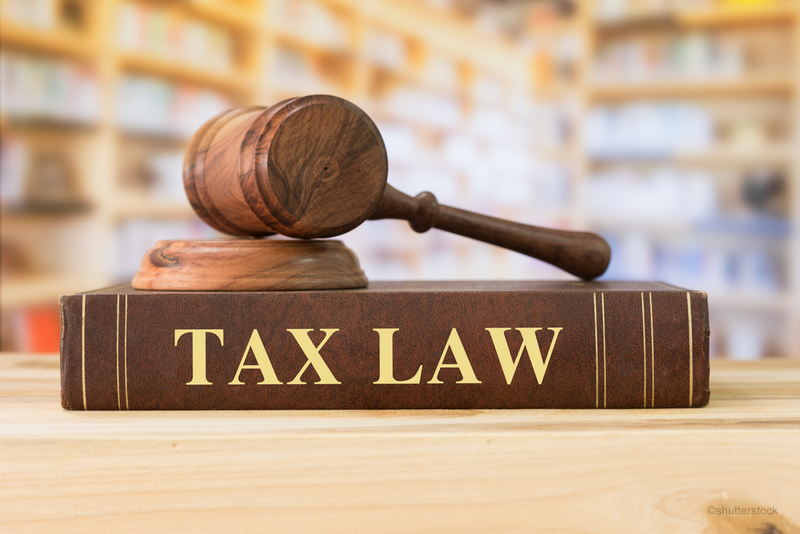
This month’s blog continues where November’s left off; we’re still talking about the tax overhaul that took effect on January 2018, which the Senate, the House of Representatives, and the President agreed upon, only this month we’re covering the changes that might affect your business.
Just to be clear, the new laws did not impact your 2017 taxes but it is a good idea to plan for the upcoming year. Today we’re going to talk about some of the most important changes to give you an idea where you and your family might stand. For more in-depth coverage, we invite you to consult with one of our experienced consultants.
So for corporate tax rates, they are changing from a progressive tax rate that tops out at 35% to one that tops out at a 21% flat rate. For corporations that have lower income levels, they will be paying more taxes than in the prior years as opposed to those corporations with larger income levels, and the breakeven point is around $90,400 of their taxable income.
Here’s the thing. Even if you determine that the corporate tax rate benefits your company, remember, to pay yourself dividends from the earnings you’ll need to pay taxes on the personal level for the dividends that you receive. Bear in mind that these dividends are taxed at the preferential capital gains rates and which this double taxation might mean you pay more in taxes in the long run than if you had formed an S-Corp or Partnership/LLC.
One more thing. If you decide that you’re not going to pay yourself any dividends to avoid this double taxation, the IRS has a tax called the Accumulated Earnings Tax which taxes at an additional 20% rate on those earnings that you keep in the corporation in excess of your business needs, and are not paid as dividends. Be advised that the IRS hasn’t made a determination of what “in excess of the business needs” means, so you’ll definitely want to consult with your tax advisor when planning which kind of business entity to form.
Corporate AMT (corporate alternative minimum tax)
This new tax reform repeals the AMT which helps those clients that were subject to this taxation. The tax was originally designed to ensure that a corporation pays at least some minimum taxes by limiting or getting rid of certain deductions, credits, or other tax preference items.
NOL Carryforwards (Net Operating Losses)
Under the new law, the carryback provision is repealed, except for farmers who still get a 2-year carryback. However, the new change expands the carryforward provision, which means you can carry it forward indefinitely, instead 20 years. But it limits the net operating loss deduction to 80% of taxable income, down 20% of the 100% deduction that was allowed previously. Note that if you have a large corporation whose NOLS haven’t paid taxes in years, you’ll now be paying tax on the 20% difference.
Pass-Through Entities – S-Corps, Partnerships, LLC’s, – Pass-through Income Deduction
Under the new changes, individuals will be allowed to deduct 20% of their “qualified business income” or QBI, from a partnership, S Corporation, sole proprietorship or other entity. There are different thresholds and rules though, for different businesses, so for example, specified service trades or business like accountants, lawyers, financial advisors, to name a few. Because there are many unknowns and exceptions within this law, we advise consulting with your tax advisor before filing your 2018 income taxes.
Items that positively affect businesses (LLC’s, Partnerships, S-Corps, C-Corps) – Bonus Depreciation
The new laws not only extended bonus depreciation under Sec. 168 (k), but expanded it. If you are a business you can immediately deduct the cost of eligible property in the year it is placed in service. The eligible deduction has been changed to 100% of the cost in the year it’s placed into service, which is double what it was before at 50%. But the deduction decreases after 2022 at the following rates:
80% allowed for property placed in service in 2023
60% allowed for property placed in service in 2024
40% allowed for property placed in service in 2015
20% allowed for property placed in service in 2016
Another thing this tax act does is expands the law that allows bonus depreciation on new and used property rather than just new property. This greatly benefits companies during these listed years so they can expand their business as well as take the deduction for the entire deduction of the asset.
179 Deduction
The new law changed this deduction, expanding it from $500,000 to $1,000,000 while also increasing the phaseout to $2.5 million.
Just like the bonus depreciation, this one allows companies to a 100% deduction in the year the asset is placed in service. However, this won’t be needed until the bonus depreciation rates start to decrease in 2023.
50% Meals Deduction
Instead of eliminating this deduction which was speculated upon, it remains in place. This allows your business to deduct 50% of the food and beverage expenses involved with operating your business. Not only that, it expands the food and beverages offered to your employees using an eating facility for your convenience. This deduction is allowed at 50% from December 31, 2017, through December 31, 2025.
Items that negatively affect businesses (LLC’s, Partnerships, S-Corps, C-Corps) / Entertainment expenses
The new laws remove the former 50% reduction that you received for activities that fell under the category of entertainment, amusement, and recreation, as well as membership dues for clubs organized for business, recreation, pleasure or social purposes.
These are only a few of the new tax law changes that may affect your business’s tax returns starting in 2018. We invite you to reach out to your tax advisor or call Corporate Capital at 855-371-0070 to get your business ready and avoid potential problems.


 855-371-0070
855-371-0070